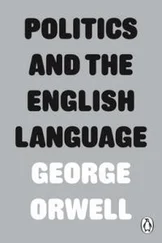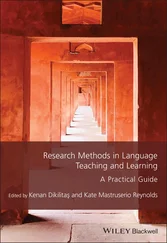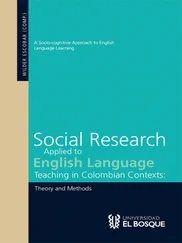 Digital Literacies
Digital Literacies
The model of digital literacies by Gavin Dudeney, Nicky Hockly and Mark Pegrum was first published in 2013 in Digital Literacies: Research and Resources in Language Teaching . The revised version is already accessible in the article “Digital Literacies Revisited” The European Journal of Applied Linguistics and TEFL (2018, Volume 7, Number 2). Figure 1 shows the revised framework of digital literacies from 2018.
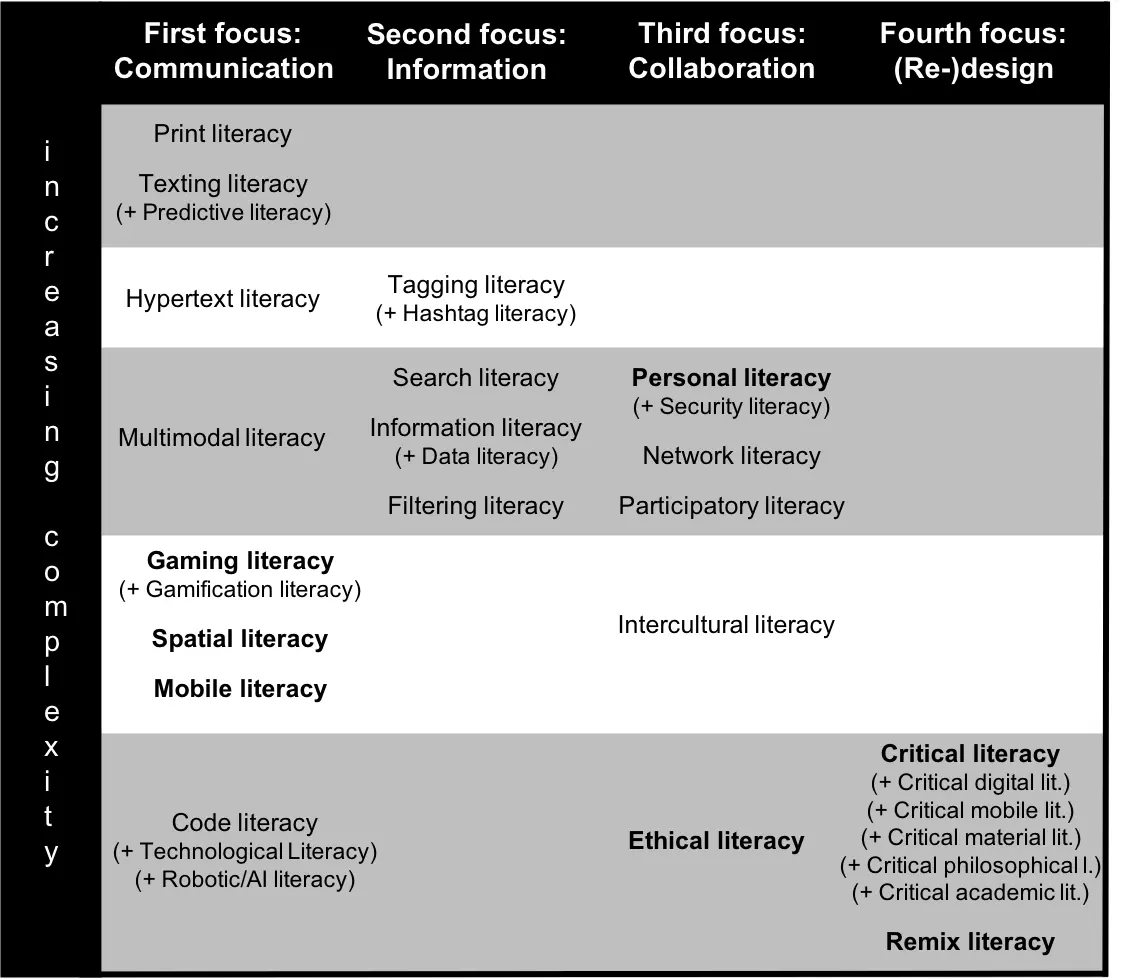
Figure 1: Revised framework of digital literacies 2018. Adapted from the original source: https://markpegrum.com/overview-of-digital-learning/e-learning-with-web-3-0/
CL and TM: Is foreign language learning actually changing fundamentally through the use of digital media? Or is this merely an illusion?
NH: This is an interesting question. Second language acquisition (SLA) research shows us that certain things need to happen for us to learn a foreign language. For example, we need both input and output – that is we need to be exposed to the language, and we also need to produce or practice it. We need a certain amount of language awareness, that is, an understanding of the grammar, vocabulary and pronunciation – the ‘nuts and bolts’ – of the language. We need to be motivated and engaged to learn. These things have not changed. However, digital resources arguably enable us to optimise some of these key SLA conditions. For example, we can now get input in the foreign language from a huge range of sources, and in a range of media (written, audio, video, images). We can easily connect with speakers of our target language, and communicate online with them in written and/or spoken form. There are plenty of language learning resources, apps and courses, in a range of languages, that we can access, often for free. So there is no doubt that digital technologies have changed how we access – and even use – language. It has also changed where and when we access learning resources, because the internet provides us with many opportunities for informal and ‘just-in-time’ language learning.
The role of the teacher has also been changed by technology. From frequently being the only source of information for and about the foreign language, the teacher now needs to become a facilitator who can guide students towards online resources, which in some cases can provide better or more relevant language models than the teacher him/herself. I don’t think that the teachers are going to become extinct though. Language is essentially social, and language learning is a social process. Language learning apps and websites, no matter how fancy the interface or media used, only go so far towards satisfying our communication needs. And teachers will continue to be well-placed to facilitate and support those needs in formal learning contexts.
CL and TM: If you could freely design a tool or an app for language learning without any financial or technological restraints, what would it be able to do?
NH: Probably the most difficult thing to mimic with digital technology is the cut and thrust of real human conversation. Chatbots function adequately in very limited domains, in which the conversational prompts are limited and predictable, but they are nowhere near capable of producing the kinds of real-life interactions that humans are capable of. So if I had a completely unlimited budget, I’d love to have an android (a humanoid robot) that could hold a real conversation on a huge range of topics, using all of the typical elements that we see in human speech, such as interruptions, hesitations, rephrasing, and so on. Maybe that will be possible someday, à la Blade Runner , but it’s a long way off! Essentially what I’m suggesting is the ideal language conversation partner, with whom you can practice your newly acquired grammar and vocabulary as if in real life, while having an interesting and engaging conversation!
CL and TM: How do you judge the potential of Virtual Reality and Artificial Intelligence for foreign language education?
NH: These are essentially the latest tools in a long line of digital technology tools. There has been some research into virtual reality (VR) for example, which shows that it can be effective in certain learning contexts, such as vocational training. For English language learning one can imagine VR being used to create slightly more realistic scenarios for role-plays. There has been some interesting work done with VR in teacher education, in which teacher trainees watch 360º recorded videos of themselves carrying out teaching practice with a class, to support post-teaching in-depth reflection (Driver 2018). However, there is no way that VR – or any other technology – is going to revolutionise language learning. There is no one single tool, app, webpage or piece of software or hardware that is going to magically make your students learn English ‘better’. Beware any educational technology vendor who comes along and promises you that their latest VR learning material is what you need to help your students learn more effectively. The research to back up such a claim is simply not there.
In terms of artificial intelligence, it is already being deployed in tools like chatbots, which have some limited applications to language learning. As pointed out by Fryer et al., “chatbots present a free and ubiquitous source of language interaction for many students learning English as a Foreign Language” (2019: 4). Research into the use of chatbots for language learning shows that they can provide low level learners with exposure to and repetition of grammatical structures, in very limited conversational domains. Nevertheless, students perceive chatbots as a poor substitute for communication with another human being – “[a chatbot’s] lack of emotion, visible cues, and inability to confirm understanding were reported to be some of the major drawbacks to its form of interaction” (Gallacher et al. 2018: 76).
So AI (in the form of chatbots) may function as a support for limited grammar or vocabulary practice, but currently AI is not complex enough to mimic human interactions in any convincing way, as I mentioned in response to the previous question. In short, I see virtual reality and artificial intelligence as having limited roles within language learning and education. They may make things more engaging and provide additional support or practice for students, but they are not a solution in themselves.
CL and TM: Thank you, Nicky, for this exciting and insightful dialogue.
Digital Dynamics of Language Learning and Professional Development
The Digital Competence of English Language Educators: Exploring the DigCompEdu Framework with an Empirical Case Study
Christiane Lütge, Thorsten Merse and Xiaoli Su
Abstract
The digitalization of schools and classrooms would be unthinkable without the adequate preparation of teachers. It is their digital competence that facilitates a mindful and goal-oriented use of digital technologies and resources, while remaining critical and strategical in view of digital innovations and practices currently underway in education. Yet what exactly does the digital competence of a teacher entail, and what in particular does it mean to be a digitally competent English language teacher? To engage with these questions, this article will present the European Framework for the Digital Competence of Educators and explain its orientational function for teachers who are seeking to integrate digital competence into their professional repertoire. With a view to achieving this challenge in EFL classrooms, this article continues to provide an empirical case study that was conducted with over 180 pre-service teachers in a university-based teacher education context. Both the results of this study and the TEFL-specific analysis of the competence framework will finally be used to draw conclusions for the digitally-oriented professional development of teachers.
Читать дальше
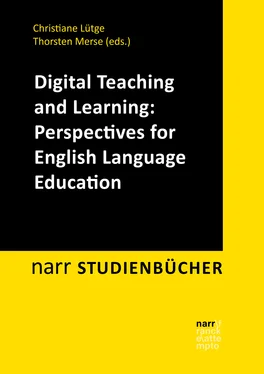
 Digital Literacies
Digital Literacies

